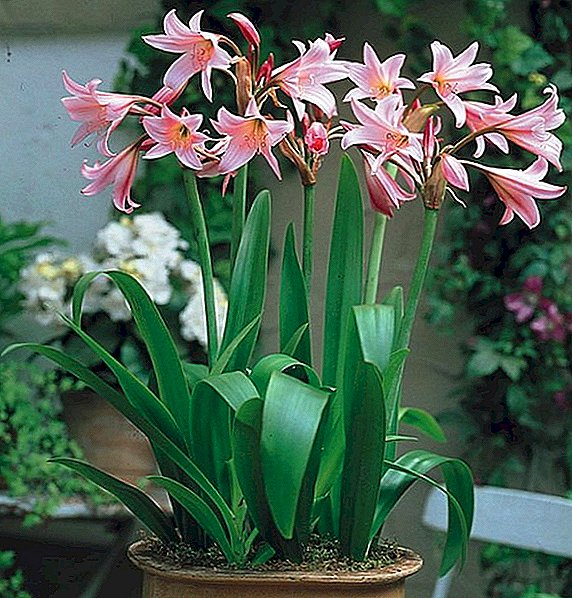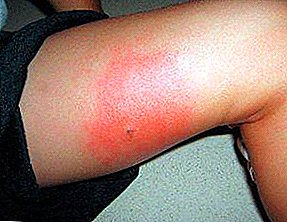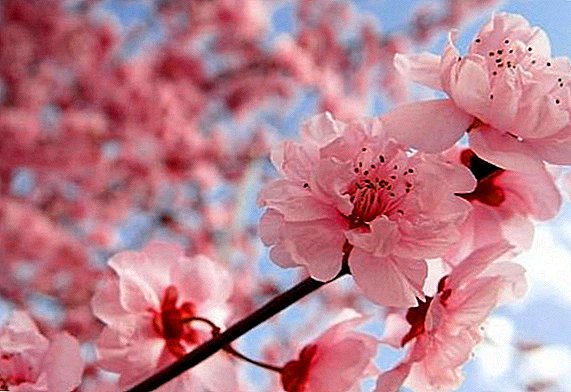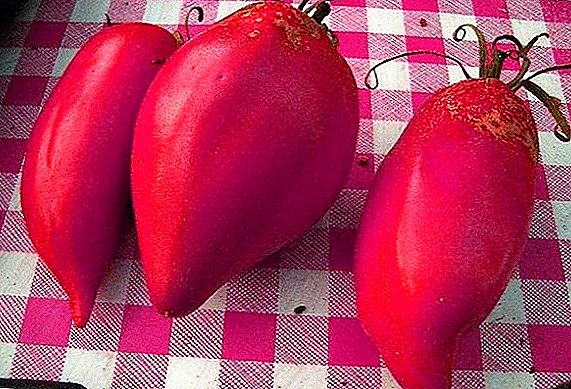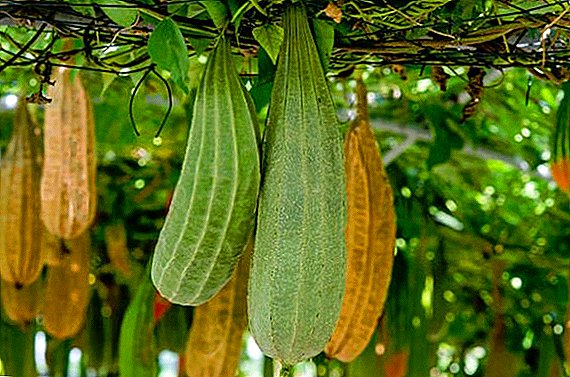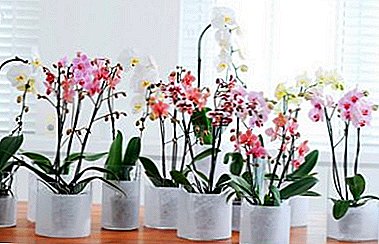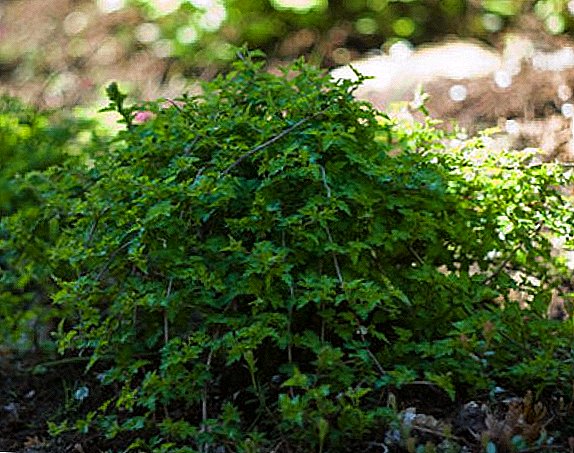 Shrub stefanandra refers to this type of plant that charms already at a glance. Despite its simplicity and inconspicuousness, this species quite successfully conquered a huge number of suburban areas both in the expanses of the fatherland and throughout the world.
Shrub stefanandra refers to this type of plant that charms already at a glance. Despite its simplicity and inconspicuousness, this species quite successfully conquered a huge number of suburban areas both in the expanses of the fatherland and throughout the world.
A simple and uninitiated man in the street this plant is familiar thanks to the many foreign films in which stefanander is always a representative of an elegant and beautiful garden in a quiet suburb.
Representatives of the species successfully grow and develop in our cold latitudes and delight their branched stem in almost any time of the year and in any weather. But under the exterior unpretentiousness lies the real mystery that we have to solve in this article.
Description
Stefanadra plant is a typical member of the Rosaceae family. The natural habitats of this species are the eastern regions of Asia, in particular Korea and the Japanese archipelago. Shrub is characterized by a branched and dense structure of shoots. It can reach a height of about 2.5 m, but in order to reach this size, the stefanander must not settle in the area for one year, as the seasonal increase in the plant is insignificant.
Did you know? From the Greek stefanandra translated as "male wreath", which shows the special location of the stamens in the flower of the plant.
 The crown characteristic of the species is formed due to the arcuate ornamental shoots with bright foliage. The color of the shoots is within the reddish-brown shades. The leaves grow on short cuttings, which are attached to the branches alternately.
The crown characteristic of the species is formed due to the arcuate ornamental shoots with bright foliage. The color of the shoots is within the reddish-brown shades. The leaves grow on short cuttings, which are attached to the branches alternately.
The lamina is egg-shaped with smooth edges or few teeth, the top of the leaflet is peculiarly pointed. In the warm season, the leaves have a bright green color, which changes to yellow-orange by autumn.  Flowering in the bush lasts from the beginning of June to the end of August. During this period, the stefanander is wrapped up with small flowers (about 5 mm in diameter), which are collected in a thin inflorescence of white shades with a pronounced, but pleasant smell. By the middle of autumn the fruits ripen at the shrub, which soon open. Spherical seeds, the number of which in one ovary does not exceed 2, spill out from the opened fruit.
Flowering in the bush lasts from the beginning of June to the end of August. During this period, the stefanander is wrapped up with small flowers (about 5 mm in diameter), which are collected in a thin inflorescence of white shades with a pronounced, but pleasant smell. By the middle of autumn the fruits ripen at the shrub, which soon open. Spherical seeds, the number of which in one ovary does not exceed 2, spill out from the opened fruit.
Plant varieties
Among the cultivated representatives of the Stefanandra there are only two species. Consider in detail each, find the main differences and advantages of each of them.
Did you know? For the first time as an ornamental plant, Stefanander was grown in 1872 in North America.
Nadrezanolistnaya
Stefanander notched leaves is an open shrub up to 1.5 m high and up to 2 m wide. In the wild, this species reaches a much larger size: up to 2 m high, up to 2.5 m wide. Such indicators can be achieved only in 20 -30 years of careful care for the bush. On the red-brown shoots of the plant, alternately opposite each other, there are rounded leaves on the elongated petioles.  The species begins to bloom at the end of May, during this period small inflorescences appear on the plant with a light but pronounced odor. Despite the fact that the flowering of the special color does not give the view, in the garden creates a light festive atmosphere. The most colorful shrub looks in the fall. At this time, it changes the usual green color of foliage to dark red and yellowish shades.
The species begins to bloom at the end of May, during this period small inflorescences appear on the plant with a light but pronounced odor. Despite the fact that the flowering of the special color does not give the view, in the garden creates a light festive atmosphere. The most colorful shrub looks in the fall. At this time, it changes the usual green color of foliage to dark red and yellowish shades.
Learn more about shrubs such as black chokeberry, Leyland cupressciparis, cypress, juniper, Kolobok gooseberry, acacia and heather.
The most popular with gardeners is the variety of this type of stefanander notched leaf crispa. It is known for its miniature size, which relates it to dwarf shrubs. The branched cousp does not reach a height of more than 60 cm, and the width is more than 2 m. A healthy and adult shrub in the garden resembles a kind of creeping blanket or a huge pillow.  A complex, opaque to sunlight crown "crisps" often spread horizontally to the soil, which leads to the rooting of young shoots, and as a result, the emergence of new plants. The leaves of the variety are particularly aesthetically valuable. They are very cut and have a complex wavy structure.
A complex, opaque to sunlight crown "crisps" often spread horizontally to the soil, which leads to the rooting of young shoots, and as a result, the emergence of new plants. The leaves of the variety are particularly aesthetically valuable. They are very cut and have a complex wavy structure.
In autumn, the variety looks particularly bright, because unlike the relatives, the foliage of the plant is colored unevenly, in brighter shades. Red, yellow and orange colors prevail among them. 
Tanaka
Stefanander Tanaki has similar dimensions to their relatives. The height of an adult bush is close to 2 m, and the width is up to 2.5 m. The species is known for its large foliage, which is up to 10 cm long. The edges of the leaves are double-fingered, rounded or heart-shaped.  In autumn, the leaves change their color to dark red or burgundy tones. Inflorescences have a special size and can reach up to 10 cm in diameter, but individual buds grow no more than 5 mm and have a greenish-cream shade.
In autumn, the leaves change their color to dark red or burgundy tones. Inflorescences have a special size and can reach up to 10 cm in diameter, but individual buds grow no more than 5 mm and have a greenish-cream shade.  The bloom of the species begins later the kinsmen for a month. The first flowers appear in early July. A characteristic feature of tanaki is the maroon color of young shoots, which eventually changes to light brown or gray.
The bloom of the species begins later the kinsmen for a month. The first flowers appear in early July. A characteristic feature of tanaki is the maroon color of young shoots, which eventually changes to light brown or gray.
Planting and care
In order to cultivate the shrub special skills or conditions are not needed. It is worth noting that the cultivation of stefanandra, planting and caring for it in the open field does not require special knowledge. The plant feels great in any climate, but the winter cycle is important for it; without it, it will be almost impossible to grow a healthy shrub. In the care, the view is also unpretentious, but to grow a spectacular plant you need to know some nondescript but important secrets.
The soil
This shrub prefers fresh, nutrient-rich soil. The substrate should consist of 50% of leafy land, 25% of sand and 25% of peat or compost to choose from, but it is better to prepare a peat-compost mixture with equal parts. The soil substrate should not be acidic, the neutral soil is best suited for growing, as in other conditions the plant will develop more slowly. You should take care of the correct light mode, the shrub will feel great in the most lightened place, but the penumbra will not harm it. 
Did you know? Stefanander Tanaki was first discovered in 1871 near Mount Fuji (Japan).
Landing
The optimal time for planting stefanandry is spring. The best warm days are best for her with an average daily temperature of + 15 ° C. Planting plants in another period will not give results, Stefanander will not have time to take root before the onset of winter cold. Owners of heavy clay soils need to be prepared in advance and provide drainage, as there is no need for excess moisture for the shrub.
In order to properly prepare the future landing site is necessary:
- dig a hole about 50 cm in diameter, the depth should be no more than 60 cm;
- lay the bottom of the pit with brick crumb, gravel or fine gravel;
- put a layer of sand about 15 cm above the stone flooring;
- to fill in in advance prepared nutritious substrate.
To do this, prepare a special liquid mixture: in 10 liters of water dissolve 1 kg of half-decomposed mullein, 15 g of ammonium nitrate and 10 g of urea. Liquid consumption for a young plant (up to 10 years old) is about 5 liters per 1 sapling, for an adult (over 10 years old) it is 10-12 liters.
Care
To care for stefanandra even a novice in the field of growing ornamental plants. The main thing is to observe small subtleties in watering and feeding the plant, it is also important not to forget about the correct pruning and preparation of the shrub for the winter cold.
Important! Stefanander does not like drafts, so the plant must be protected from excess air masses.
Watering
The plant needs frequent watering. The amount of atmospheric moisture that enters the soil to the bush in a natural way is not enough for its full growth. An adult plant needs to be watered with 10-20 liters, the frequency should be 1 time in 2 days. Additionally, stefanander should be watered only in exceptional cases: during the summer drought period, and also after planting or transplanting, during a pull of several days. At this time, it is also important to ensure that the plant is not flooded, as this can lead to rotten diseases, which further leads to the death of the shrub. 
Top dressing
Top dressing Stefanandra is very important, because without it you will not achieve a lush and dense crown, as well as its longevity and healthy appearance. For this, it is best to choose the period of active cell division, which falls on the first spring months. In the hotter time, top dressing will not harm, but the plant will not see much advantage from it.
Fertilizing all representatives of the species is ordinary humus, and the plant perfectly responds to the top dressing with infusions. Humus is brought in close proximity to the trunk and lightly added dropwise. Litter infusion poured at the root. For its preparation it is necessary for 10 days in 1 standard bucket (10-12 liters) to insist 1 kg of chicken manure.
Important! When preparing the litter infusion, it is strictly forbidden to increase the concentration in the chicken manure solution, this can lead to burns of the root system, and, consequently, to the destruction of the shrub.
Pruning
The trimming procedure for all stefanandry pass in two stages. The first begins in early spring. All shoots of the bush are diagnosed for frostbitten parts. After that, non-viable shoots are removed to the ground. For this it is best to use a special pruner for shrubs, it will provide an opportunity to carry out the procedure more aesthetically and quickly.  To rejuvenate the plant, the old parts are removed closer to the fall. For this is best suited period after the completion of flowering bush. Old branches are removed to the base. Decorative pruning is best done in the spring.
To rejuvenate the plant, the old parts are removed closer to the fall. For this is best suited period after the completion of flowering bush. Old branches are removed to the base. Decorative pruning is best done in the spring.
Transfer
Only young plants (up to 5 years) are suitable for transplantation, adult representatives have a highly developed root system, which cannot be transferred to a new place. Transplantation of young plants is practically no different from the planting of seedlings of shrubs described above. First prepare the well and its bottom, and then put the stephanandra there. The procedure is recommended to be carried out in early spring, no later than the second half of April, since a transplant later will not allow the plant to take root completely before frost. 
Important! Transplantation should be carried out before cutting the plant, and best of all, these procedures should be carried out in one day, as this will contribute to an additional incentive to activate the work of the functional systems of the plant and cell division.
Wintering
Stefanadra is a winter-hardy plant, but for a successful and painless passage of this period, the shrub requires special training, especially with regard to Tanaki, since this variety often suffers from severe frosts in the middle climatic zone. In order to minimize the negative impact on the frost shrub, it must be covered.
Young plants cover completely, for this you can use a special cloth for wrapping from polypropylene fiber, leaves or branches of coniferous trees. It is possible to protect adult plants not so seriously, they will be saved from their winter frosts by enveloping the base with fallen leaves or coniferous branches. The best choice is the branches of pine or spruce. Since only they can not only effectively protect against freezing, but also to preserve the exchange of moisture with the environment. 
Breeding
The plant can be propagated by all known methods: layering, grafting or seeds. Each of these methods is quite effective, so even a novice can grow this shrub.
Seeds
Stefanandra seeds are sown in open ground at the end of spring, the most favorable period for this will be mid-May. Before sowing the soil must first prepare. To do this, it must be loosened, fertilized and, if possible, enriched with charcoal. It is necessary to water crops often, but moderately. After germinated seedlings appear, they can be thinned out. When the seedlings grow into stronger plants, they can be transplanted to a permanent place.
Cuttings
Cutting is best done in the summer. In order to get a healthy sapling, blanks are cut from one- or two-year-old shoots. After cutting, one edge of the cutting should be straight and one slightly bevelled to the side.
Cuttings also reproduce plants such as: Brugmansia, laurel, thuja, plumeria, clementis, chrysanthemums and blue spruce.
Next, the plant fragments are immersed in a solution with a special activator of root formation for a few hours with a beveled side into the liquid. After that, the prepared containers are planted with cuttings with the beveled side to a depth of 3-4 cm, watered and covered with plastic wrap to create a greenhouse effect.
When the escape fragment has taken root, the film can be removed.
Important! In open ground, the stalk should not be planted immediately, this procedure should be carried out in the spring, strictly one year after rooting.
Layering
In order to propagate stefanander by layering, in the early spring small holes are dug around the adult plant. After this, the shoots of the shrub are tilted to the holes and the edge is dipped into them. Next shoots sprinkle with soil or peat, after which it is all plentifully watered. When the layers are fully rooted, they are cut off from the parent body and transplanted to a separate place. 
Diseases and pests
Stefanandr refers to this type of shrubs, which are practically not damaged by diseases and pests. In order to ensure a plant a prosperous and healthy existence, it is enough just to adhere to the care guidelines described above. If the shrub shows signs of gray mold disease, it is recommended to treat the plant with any preparation of complex fungicidal action. 
Application in landscape design
Stefannadra has a huge range of uses in the garden. The lush crown of this plant perfectly decorates the background of medium-sized perennials. This view will perfectly fit into the overall composition when creating an alpine slide. Branched shoots will be a wonderful decoration of retaining walls in landscapes of any complexity. In addition, this plant is quite organically combined with other shrubs in a simple landscape, and with water.  The shrub can be used as a lawn plant. This species grows well and does not allow the emergence of dangerous weeds. The best use of the species found as a tapeworm. In spring and summertime, it forms a colorful background for bright inflorescences of summer flowers, and in autumn, bright red and yellow shades of foliage will add comfort and a special mood even in the most uncomplicated garden.
The shrub can be used as a lawn plant. This species grows well and does not allow the emergence of dangerous weeds. The best use of the species found as a tapeworm. In spring and summertime, it forms a colorful background for bright inflorescences of summer flowers, and in autumn, bright red and yellow shades of foliage will add comfort and a special mood even in the most uncomplicated garden.
Did you know? In landscape design, Stefanander looks most impressive against the background of evergreen shrubs and conifers.
Stefanander the notched-leaved crisp and other varieties of this shrub are unpretentious in planting and care. In addition, due to their originality, they can be a decoration of any garden and design solutions.
Despite the fact that Stefanander in our area is not very popular, only a glance to many gardeners is enough to forever fall in love with these elegant plants.


